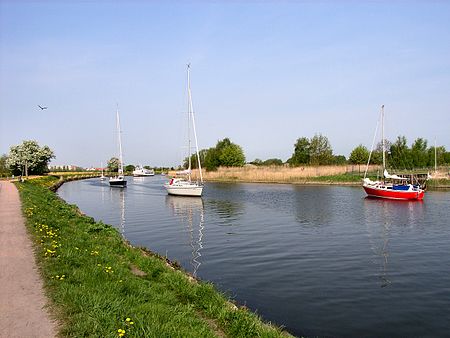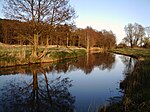Ryck

The Ryck is a river in Mecklenburg-Vorpommern, Germany. From its source near Bartmannshagen, part of the Süderholz community northeast of Grimmen, the Ryck flows for about 28 kilometres (17 mi) to the east, reaching Greifswald shortly before its mouth. The larger part of the river outside Greifswald is also referred to as Ryckgraben. In Greifswald, the Ryck provided both the medieval Hanseatic port and natural salt evaporation ponds, as due to the low elevation, hypersaline water of the Baltic Sea is driven into the river by the wind, flooding the lower meadows on the Ryck's northern bank. In the High Middle Ages, the Ryck marked the southern border of the Principality of Rügen and the northern border of the County of Gützkow. West of Greifswald, the Ryck fed the Boltenhägener Teich, a medieval lake. The old Hanseatic port in Greifswald is now an open-air ship museum.
Excerpt from the Wikipedia article Ryck (License: CC BY-SA 3.0, Authors, Images).Ryck
Neue Straße,
Geographical coordinates (GPS) Address Nearby Places Show on map
Geographical coordinates (GPS)
| Latitude | Longitude |
|---|---|
| N 54.1 ° | E 13.45 ° |
Address
Neue Straße
17493 , Wieck
Mecklenburg-Vorpommern, Germany
Open on Google Maps







